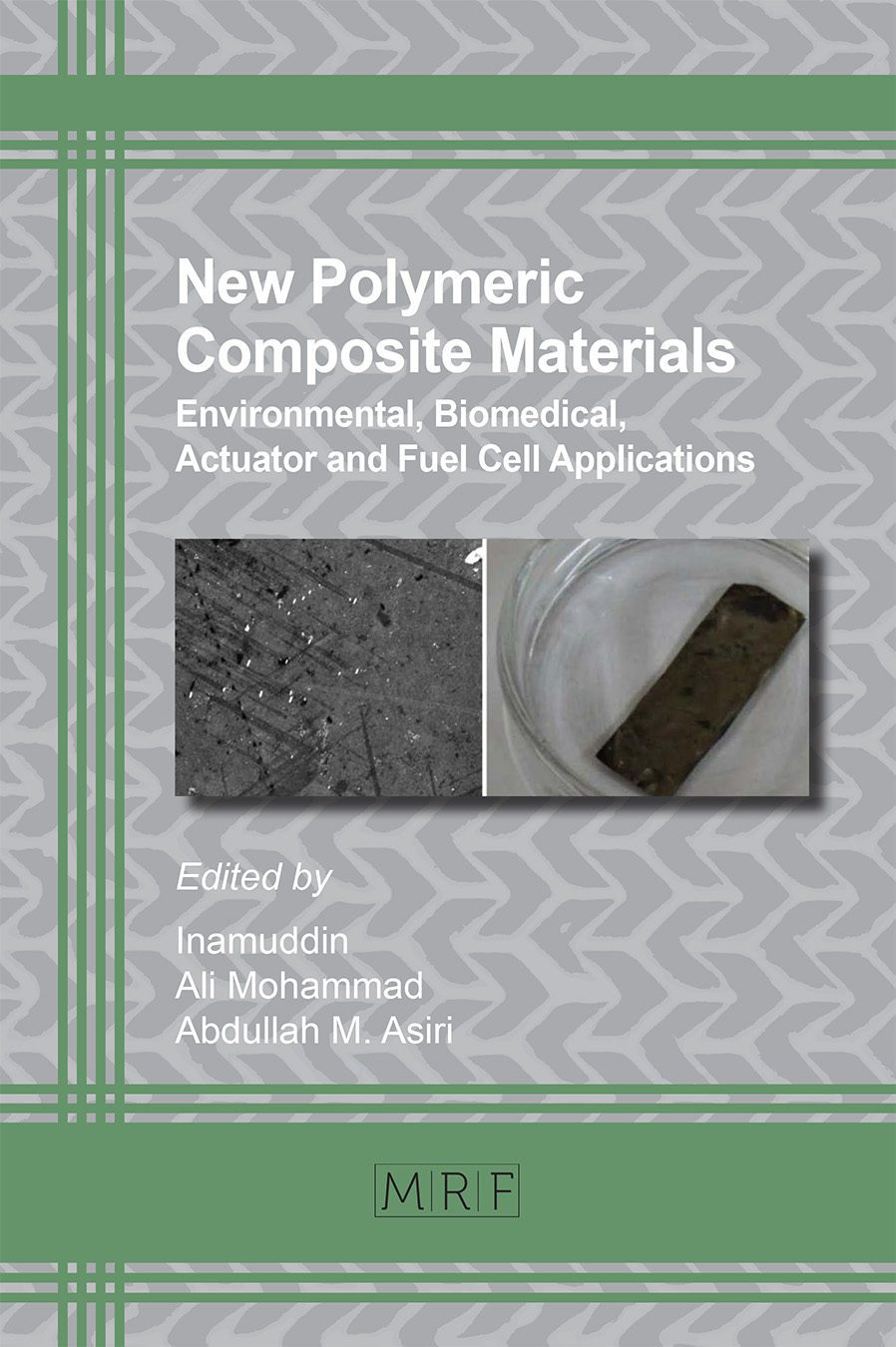Evaluation of the Performance Characteristics of Polymeric Geomembranes
Parvathi Krishnan, Ramesh Babu Padamati, Priya Dasan K
The increasing consumerism and improved lifestyle has resulted in huge waste generation. The proper disposal of this waste is a real challenge and lots of research are going on around the world to develop new techniques or to improvise the existing techniques to face this challenge. Land filling has been in practice for a long time and different improvisation methodologies have been adopted from time to time. Landfill liners or geomebranes are one of the most important components of landfilling which ensure the safe disposal of wastes. This article summarizes the various physical, chemical, thermal and mechanical factors that affect the performance of a geo-membrane. The modes and mechanisms of failure of these geo-membranes are briefly looked upon. The effect of operating conditions on the projected life of geo-membrane is discussed in detail. Also some of the factors that must be considered before choosing a specific geo-membrane material and the pros and cons of various commonly used geo-membrane materials are also included in this chapter. This chapter looks into providing information that would help in the selection of proper geo-membrane material with respect to exposure conditions, expected life and available resources
Keywords
Geomembrane, Landfill, Polymer Composites, Nanoclay
Published online 11/1/2016, 20 pages
DOI: http://dx.doi.org/10.21741/9781945291098-3
Part of New Polymeric Composite Materials
References
[1] MufeedSharholy, Kafeel Ahmad, R.C. Vaishya, R.D. Gupta: Municipal solid waste characteristics and management in Allahabad, India, Waste Management. 27(2007) 490–496.
http://dx.doi.org/10.1016/j.wasman.2006.03.001
[2] Cuevas, J., Ruiz, A. I, de Soto, I. S, Sevilla, T, Procopio, J. R, Da Silva, P. Leguey, The performance of natural clay as a barrier to the diffusion of municipal solid waste landfill leachates. Journal of environmental management, 95 (2012) 175-181.
http://dx.doi.org/10.1016/j.jenvman.2011.02.014
[3] Gamski, K.Geomembranes: classification, use and performance. Geotextiles and Geomembranes, 1, 2 (1984), 85-117.
http://dx.doi.org/10.1016/0266-1144(84)90009-8
[4] Scheirs, John. A guide to polymeric geomembranes: a practical approach. John Wiley & Sons, 2009.
http://dx.doi.org/10.1002/9780470748213
[5] Peggs, I.D, Thiel, R. Selecting a geomembrane material. Proceedings of the Sixth International Conference on Geosynthetics, Vol.1, Atlanta, March. Industrial Fabrics Association International, 1998, St. Paul, MN, 381–388
[6] R. K Rowe, Effect of ageing on the stress crack resistance of an HDPE geomembrane, Polymer Degradation and Stability, 109 (2014) 194-208.
http://dx.doi.org/10.1016/j.polymdegradstab.2014.06.013
[7] Hsuan, Y. G., and R. M. Koerner. “Long term durability of HDPE geomembrane: Part I—Depletion of antioxidant.” GRI Report 16 (1995) 35
[8] Mueller, Werner, Ines Jakob, Oxidative resistance of high-density polyethylene geomembranes. Polymer Degradation and Stability, 79, 1 (2003) 161-172.
http://dx.doi.org/10.1016/S0141-3910(02)00269-0
[9] Rowe R. K, Sangam H. P,Durability of HDPE geomembranes. Geotextiles and Geomembranes, 20, 2 (2002) 77-95.
http://dx.doi.org/10.1016/S0266-1144(02)00005-5
[10] R.K. Rowe, Migration of dilute aqueous organic pollutants through HDPE geomembranes, Geotextiles and Geomembranes, 19, 6 (2001) 329-357.
http://dx.doi.org/10.1016/S0266-1144(01)00013-9
[11] R. K. Rowe, M. Z Islam, Y. G. Hsuan. Leachate chemical composition effects on OIT depletion in HDPE geomembranes, Geosynthetics International, 15,2 (2008) 136-151
http://dx.doi.org/10.1680/gein.2008.15.2.136
[12] R. K. Rowe, M. Z. Islam, Y. G. Hsuan. Leachate chemical composition effects on OIT depletion in HDPE geomembranes.” Geosynthetics International, 15 (2), (2008), 136-151
http://dx.doi.org/10.1680/gein.2008.15.2.136
[13] S.B Gulec, T.B Edil, C.H Benson, Geosynthetics International 11,2 (2004), 60-72
http://dx.doi.org/10.1680/gein.2004.11.2.60
[14] Han-Yong Jeon, Nanotechnology Formulations and Modeling of Hydraulic Permeability Improvement for Nonwoven Geotextiles.
http://dx.doi.org/10.5772/61997
[15] Mueller, Werner, Ines Jakob, Oxidative resistance of high-density polyethylene geomembranes, Polymer Degradation and Stability, 79, 1 (2003) 161-172.
http://dx.doi.org/10.1016/S0141-3910(02)00269-0
[16] A.M.R Ewais, R.K Rowe, Geotextiles and Geomembranes 42, 2, (2014) 111–126 ·
[17] M. Sen, A. A. Basfar, The effect of UV light on the thermooxidative stability of linear low density polyethylene films crosslinked by ionizing radiation, Radiation Physics and Chemistry, 52,1 (1998) 247-250 Stessel, Richard Ian; Hodge, James Steven, Chemical resistance testing of geomembrane liners. Journal Of Hazardous Materials. 42,3 (1995) 265-287
[18] A. Nicholas, J. I. Apse, W. A. Hoffman, W. M. Song. “MDPE/VLDPE materials development.” Geotextiles and Geomembranes, 10,5 (1991) 613-620
http://dx.doi.org/10.1016/0266-1144(91)90051-W
[19] P. A. Dilara, D. Briassoulis, Standard Testing Methods for Mechanical Properties and Degradation of Low Density Polyethylene (LDPE) Films Used as greenhouse covering materials: a critical evaluation, Polymer Testing, 17 (1998) 549-585
http://dx.doi.org/10.1016/S0142-9418(97)00074-3
[20] R. Kerry Rowe, Durability of fluorinated high density polyethylene geomembrane in the Arctic Geotextiles and Geomembranes, 28 (2010) 100-107
[21] Q. Fu, et al., Understanding of the tensile deformation in HDPE/LDPE blends based on their crystal structure and phase morphology, Polymer, 44 (2003) 1927-1933
http://dx.doi.org/10.1016/S0032-3861(02)00940-0
[22] F. A Antonio vila, A mechanical analysis on recycled PET/HDPE composites, Polymer Degradation and Stability 80 (2003) 373–382
http://dx.doi.org/10.1016/S0141-3910(03)00025-9
[23] Farizah Hamid, Mechanical and thermal properties of polyamide 6/HDPE-g MAH/HDPE, Procedia Engineering, 68 (2013) 418-424.
http://dx.doi.org/10.1016/j.proeng.2013.12.201
[24] Abdullah M. Alhamdan, Mechanical deterioration of polyethylene greenhouses covering under arid conditions, journal of materials processing technology, 209 (2009) 63-69
[25] Arvanitoyannis, Ioannis, Costas G. Biliaderis, Hiromasa Ogawa, and Norioki Kawasaki. “Biodegradable films made from low-density polyethylene (LDPE), rice starch and potato starch for food packaging applications: Part Mechanical properties of covering materials for greenhouses, part II: quality assessment1. Carbohydrate Polymers. 36 2, (1998) 89-104
[26] T. Katsumi, Performance based design of landfill liners, Engineering geology 60 (2001) 139-148
http://dx.doi.org/10.1016/S0013-7952(00)00096-X
[27] A. Nicholas, J. I. Apse, W. A. Hoffman, W. M. Song, MDPE/VLDPE materials development, Geotextiles and Geomembranes10,5, (1991) 613-620
[28] R. N. Jana, G. B. Nando, Thermogravimetric analysis of blends of low‐density polyethylene and poly (dimethyl siloxane) rubber: The effects of compatibilizers, Journal of applied polymer science 90,3 (2003) 635-642.
http://dx.doi.org/10.1002/app.12599
[29] Santra, N.Robin, P. G. Mukunda, G. B. Nando, and T. K. Chaki. Thermogravimetric studies on miscible blends of ethylene-methyl acrylate copolymer (EMA) and polydimethylsiloxane rubber (PDMS), Thermochimicaacta, 219 (1993) 283-292
http://dx.doi.org/10.1016/0040-6031(93)80505-5
[30] Sajwan, Madhuri, Saroj Aggarwal, R. B. Singh, Forensic characterization of HDPE pipes by DSC, Forensic science international 175,2 (2008) 130-133
http://dx.doi.org/10.1016/j.forsciint.2007.05.020
[31] Farizah Hamid, Mechanical and thermal properties of polyamide 6/HDPE-g MAH/HDPE, Procedia Engineering, 68 (2013) 418-424.
http://dx.doi.org/10.1016/j.proeng.2013.12.201
[32] Ahmed A. Basfar, UV stability and radiation crosslinking of linear low density polyethylene and low density polyethylene for greenhouse applications, Polymer Degradation and Stability, 82 (2003) 229–234.
http://dx.doi.org/10.1016/S0141-3910(03)00216-7
































